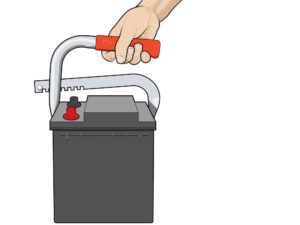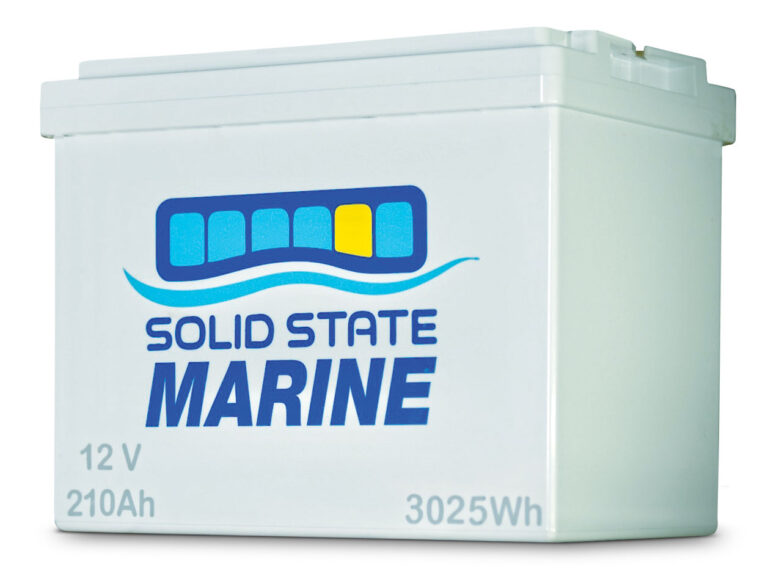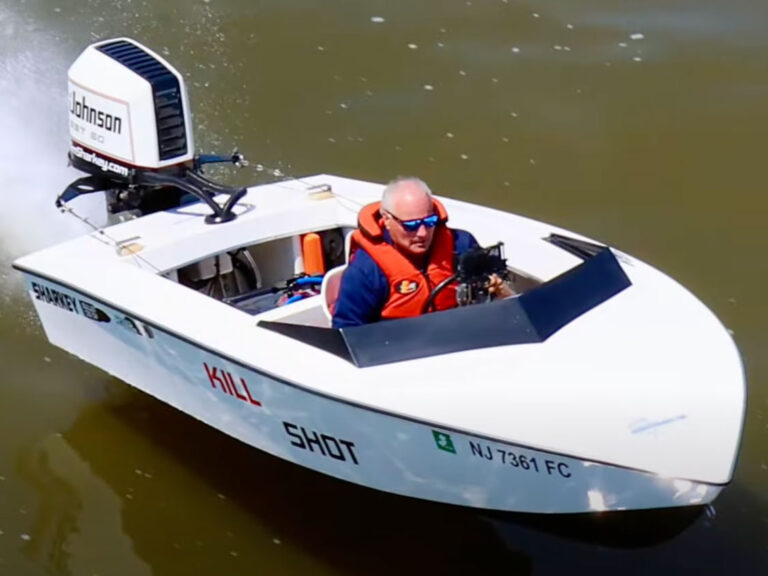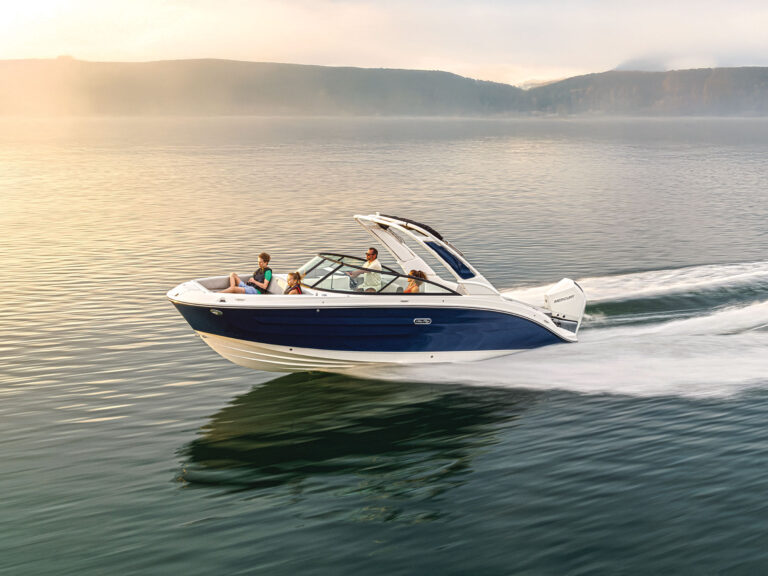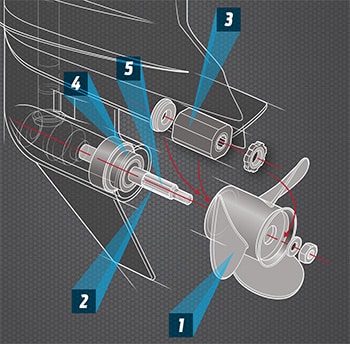
Once a boat’s hauled out of the water, it’s a lot easier to inspect the propellers, prop shafts, seals and zincs. It’s also a good time to get any needed repairs or maintenance done, rather than waiting until the start of next season when everyone else is clamoring to get their boats fixed. Let’s check out the major inspection points.
1. Blades
Whether you own an inboard, sterndrive or outboard, carefully scrutinize the propeller blades for damage. Dings and missing chunks are easy to spot, but a slightly bent blade may not be readily apparent, though you can often feel it when underway because it usually creates vibration. Looking at a prop from the side makes it easier to spot a bent blade.
Another way to determine if a blade is bent is to measure the distance between the outermost edge of each blade and a straightedge suspended from a fixed point such as the anti-ventilation plate of an outboard or sterndrive or the bottom of the hull of an inboard. If the distance substantially deviates for one or more blades, you have an issue such as a bent blade.
You can often fix small dings and chinks in prop blades by filing them down, but be careful not to remove too much material, because this can throw a prop out of balance. Major damage such as broken or bent blades requires the expertise and equipment of a prop shop for repair and rebalancing. While many shops can perform near miracles in fixing mangled props, sometimes a wheel is beyond repair and you’ll need to buy another one.
2. Shafts
Vibration while underway can also be an indicator of a bent prop shaft. Any variation in the distance between blade tips and a fixed point, or a visible wobble, can also mean a bent shaft. For inboards, check out the bearings: The prop should be centered within them. Ultimately, if you suspect a shaft is not true, have a shop check and replace or retrue it as necessary. The shop should also check related components such as bearings, seals and couplers, which can be damaged by running a boat with a bent prop shaft.
3. Hubs
The hubs of propellers on outboards and sterndrives are designed to give way if the prop strikes an object to prevent damage to the rest of the drivetrain. However, hubs — particularly the old-style rubber hubs — can also wear out with time and heat. So if your prop is 10 years old or older, it is a good idea to have a prop shop check the hub and replace it (“rehub” it) with a fresh one if it thinks it is on the verge of giving way.
4. Seals
Errant fishing line — especially the newer braided line — can quickly melt and become a sharp-edged disc once it gets wrapped around a prop shaft; then it can slice into the prop-shaft seals. With inboards, carefully inspect the outside of the shaft seals and have the yard replace a seal if there is any indication of fishing-line damage.
On outboards and sterndrives, remove the propeller and hardware and check for fishing line. Remove any line you find and look for leakage of gear lube, which might have a milky hue if the seal has been leaking for any period of time. Even with no sign of leakage, drain the gear lube and have a shop pressure-check the gear case. If the lower unit does not meet its pressure specifications, have the seal replaced, and then refill the gear case with fresh lube.
5. Prop-Shaft
Grease Before reinstalling the propeller, inspect the prop hardware and replace any worn components such as a cotter pin or keyway. Then apply a generous coat of fresh marine grease to the entire shaft and install the prop, tightening the prop nut to the engine builder’s specification. Greasing the prop shaft will make it easy next time to remove the wheel, particularly if the shaft and prop are dissimilar metals.
Quick Tip: Wedging a block of wood between a blade and the anti-ventilation plate or hull will keep the prop from turning while you remove or install the prop nut.




